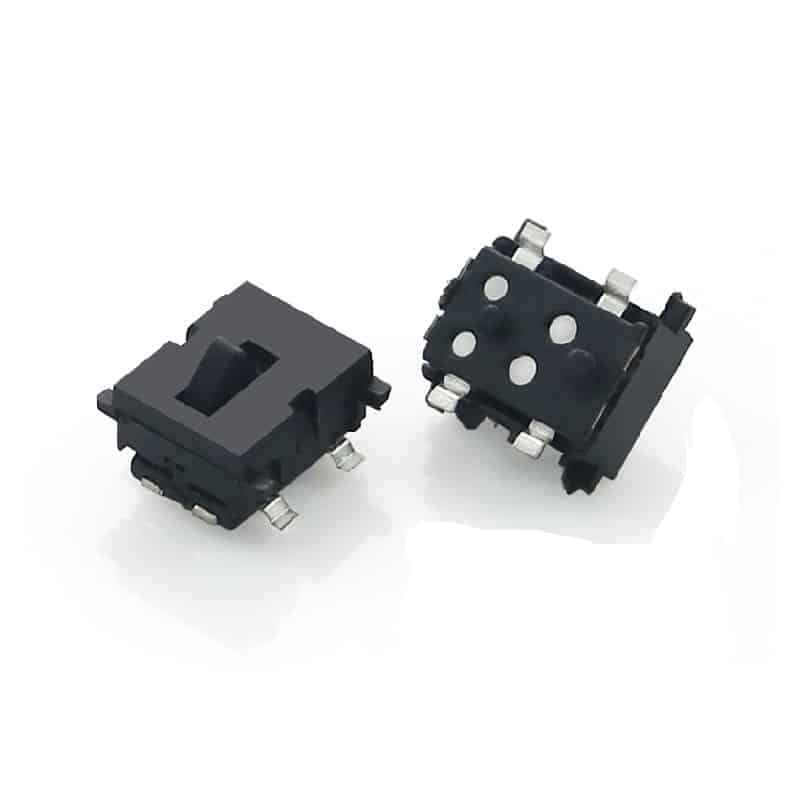Des: Micro Detect Switches 4.75×3.6 Mini Thru-Hole Detector Switch 4 Pin DIP Right Angle
Part No: DS-012
Specification:
Rating: 50mA, DC 12V
Travel: 0.3±0.10mm
Operating force: 35gf
Operating Life: 100,000 Cycles
Packaging: Reel/Bag

Des: Micro Detect Switches 4.75×3.6 Mini Thru-Hole Detector Switch 4 Pin DIP Right Angle
Part No: DS-012
Specification:
Rating: 50mA, DC 12V
Travel: 0.3±0.10mm
Operating force: 35gf
Operating Life: 100,000 Cycles
Packaging: Reel/Bag
In the electronics manufacturing industry, connectors are indispensable key components responsible for linking circuits and ensuring stable transmission of current or signals. FFC connectors (Flexible Flat Cable Connectors) and FPC connectors (Flexible Printed Circuit Connectors) are two common types of connectors, each with unique characteristics and application fields. Brief Introduction of FFC Connector and FPC Connector FFC connectors are commonly used to connect ribbon-like flat flexible cables (FFC) to PCB circuits in wire-to-board applications, and they can also be employed in wire-to-wire configurations. These connectors feature high density and an
Quartz Crystal Oscillators The quartz crystal oscillator is a resonant device made using the piezoelectric effect of quartz crystals, and is capable of generating high-precision oscillation frequencies to provide stable clock signals for electronic systems. Working Principle Piezoelectric Effect: When a quartz crystal is subjected to mechanical stress, it generates an electric charge on its surface. Conversely, when an electric field is applied across the crystal, it undergoes mechanical deformation. This mutual conversion between mechanical stress and electric charge is known as the piezoelectric effect. When an alternating voltage is
Various technologies can be used to regulate the amount of current in a circuit, and slide switches are among the most widely used solutions. Slide switches provide a compact and reliable way to control circuits, connecting or disconnecting them with a simple linear sliding motion. This brief technical review will examine how slide switches work, explore their main configurations, and outline the electrical and mechanical considerations for optimal selection. Basics of Slide Switches A slide switch is an electromechanical component that controls a circuit by moving a linear sliding mechanism.
Are you looking for a reliable electronic connector manufacturer to support your business with high-quality products at competitive pricing?